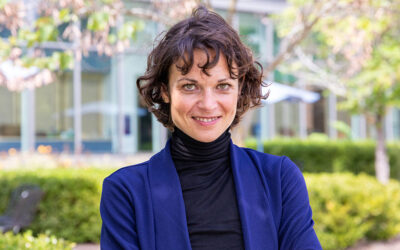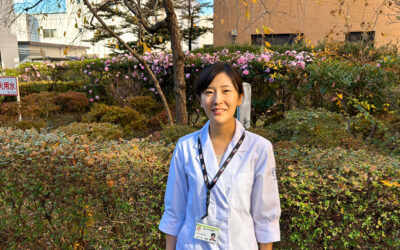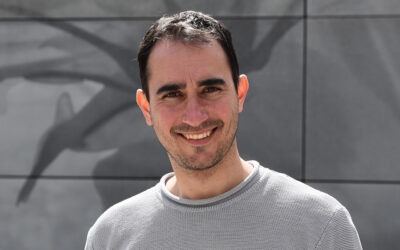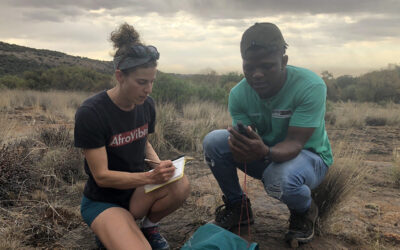Born in Taiwan, Yang Yang was inspired by the challenges of the scientific method from an early age. After pursuing his undergraduate education in physics from the National Cheng-Kung University and serving in the Taiwanese military service for two years, Yang made a huge leap and moved to the United States to pursue his graduate studies in physics at the University of Massachusetts, Lowell.
After a brief stint in industry where he worked as a researcher for UNIAX (now Dupont Display), Yang joined the faculty at UCLA in 1997. Now the Carol and Lawrence E. Tannas Jr. Endowed Chair Professor of Materials Science and Engineering at UCLA, Yang is free to pursue his research as a materials physicist and has gained expertise in the fields of organic electronics, organic/inorganic interface engineering, and the development and fabrication of related devices, such as photovoltaic cells, LEDs, and memory devices.
Yang’s excitement and passion for his research are truly inspiring, which has not only led to important scientific discoveries and an admiral academic career, but his work has also helped to open his mind to the importance of diversity within the research community, and underpins his current endeavors to support young talent in the field.
Who are your role models or earliest influences?
Without a doubt my father. He was an electrical engineer and worked as a government employee for his whole life. However, he had a lot of hobbies. For example, he built his own radio, a kitchen oven (for baking cakes), and he was a very good cook as well. I grew up in the countryside until the age of 10 before moving to Taipei. My family was poor. We could not afford to buy toys for me to play around with so my father brought home batteries, wires, motors, and small light bulbs and I had to make my own toys. I remember I made electrical fans, small circuits to turn on the light bulbs, and even a small motorboat. All of that was fun, and later on I realized that that was the best education [and means] to cultivate one’s creativity from a young age.
What excites you about your work?
Challenges, unlimited challenges (and fun) in research, as well as educating my students mainly through these research challenges. Fundamentally, we try to understand the basic science of organic photovoltaics. Technically, we like to apply our knowledge and deep understanding of these fundamentals to achieve new record efficiencies for organic photovoltaic devices, as well as invent new devices.
For example, the topic of tandem-junction devices is very interesting. Theoretically, tandem organic photovoltaics have enormous potential to achieve significantly higher efficiencies than single-junction devices. However, it took us two years, from 2007-2009, just to prove the feasibility of this idea.
What were some challenges you faced during your career?
The most challenging and difficult situations that I have experienced happened when I was a Ph.D. student. I had to switch my major/research group three times for personal reasons, from studying nonlinear optics (physics), to silicon solar cells (electrical engineering), and then to conjugated polymers (chemistry). Each change meant that I had to learn something new from scratch. Although at that time there was no connection between these fields of study, in the end they all involve semiconductors. My situation was very difficult back then, but in retrospect, it was worth all the effort. I have gained my understanding of interdisciplinary research from this experience.
Throughout my career, I have always tried to explore new directions. Often, I have had to leave my comfort zone just so that I could climb higher to the next peak. Staying in one’s comfort zone, sometimes things become routine and mundane. Therefore, I needed to constantly challenge myself to push myself forward to the leading edge of research. This ensures that I am exploring novel and exciting ideas, to achieve scientific breakthroughs. Research is dynamic, and challenges and opportunities always go hand in hand.
What advice would you give to your younger self or new researchers entering the field/how could things be improved to avoid them?
The advice that I can share with young researchers is: Be patient and be honest with yourself. Does the research that you are working on really excite you? Have you taken enough risks in your research? Do something different and novel, not just follow-up work. Talk to people smarter than you, so that you can learn and improve over time.
What would you say has been your most impactful contribution to your field and what do you hope will be your legacy?
I think the understanding of polymer morphology and its influence on the electronic properties of the conjugated polymer and the organic photovoltaic device performance. Our efforts have enabled a series of breakthroughs in the field, including record-high efficiencies certified by the National Renewable Energy Laboratory in 2009 (7%), 2011 (8.6%), 2012 (10.6%), and 2018 (11.5% and 12.6%).
I hope that these efforts can help advance the fundamental understanding of organic electronic materials and devices beyond organic photovoltaics.
Can you briefly comment on the topic/research discussed in your AEnM essay?
In consideration of the unique advantages of new non-fullerene acceptors and the tandem-junction structure, OPVs based on them are very promising. Studies related to this emerging area began in 2016 with achieved power conversion efficiencies of 8–10%, which now have been boosted to 17%. In this essay, the construction of high-performance OPVs is discussed, with a focus on how to combine the advantages of new non-fullerene acceptors and the tandem-junction structure. It is forecast that the new non-fullerene acceptors-based tandem-junction OPVs will become the next big wave in the OPV field.
What are your future plans?
To enjoy life. For my future plans, I would like to apply my experiences in research and education to help young people. As educators, our primary responsibility is to interact with people. During my teaching career at UCLA, I gradually changed and developed my teaching philosophy. Now that I have an opportunity to teach in Asia, I want to apply what I have learned in a new culture.
The beauty of the United States is the diversity and heterogeneity in the education system, which breeds creativity. My goal is to share this culture and spirit within Asia. For the entire research community to prosper, we need the best people from different cultures and backgrounds.
As the Founding Dean of the School of Engineering, Westlake University, in Hangzhou, China, I want to establish a research and education system that will be different from any other in Asia. This journey of building a new engineering school really excites me.
What are your interests outside of the lab?
I enjoy working, because research is fun. In addition, I enjoy reading as well, especially history books and biographies of people who have had an impact on history. I also enjoy talking to people working in different fields so that I can learn from them to enrich my knowledge, broaden my horizons, and keep myself updated as to what are the most exciting developments in different fields. This sometimes can also help me come up with some new ideas for my research.
_____
To learn more about Yang Yang’s work in high‐performance organic photovoltaics, read his recent paper published in Advanced Energy Materials, which is part of a recent Virtual Issue “10 Years of Advanced Energy Materials Research” celebrating the 10th anniversary of the journal.

















